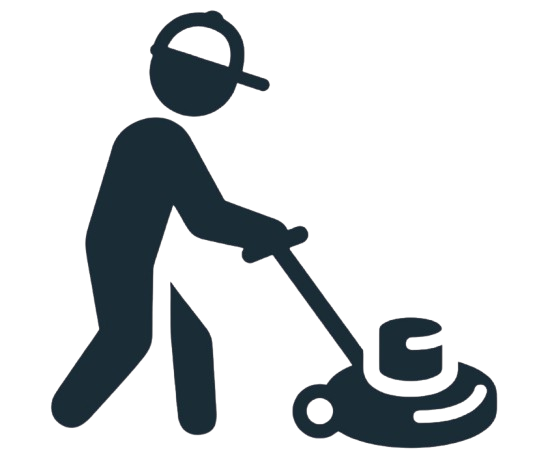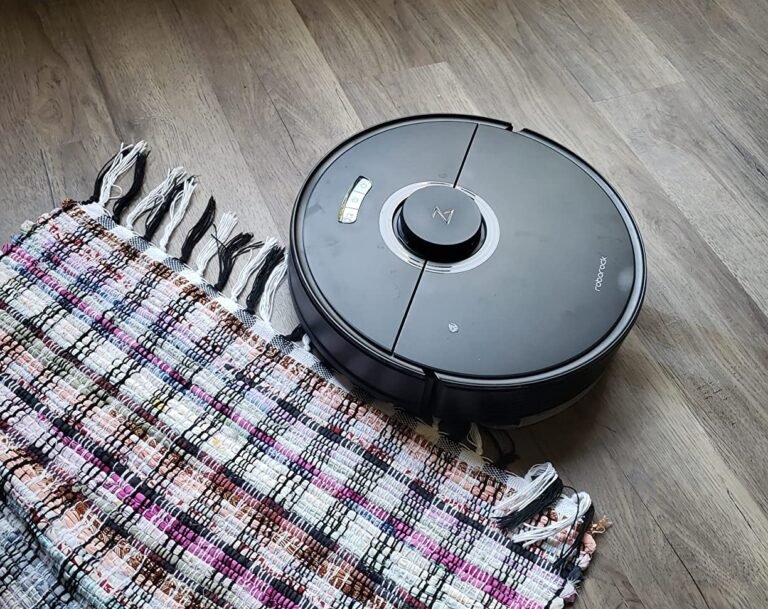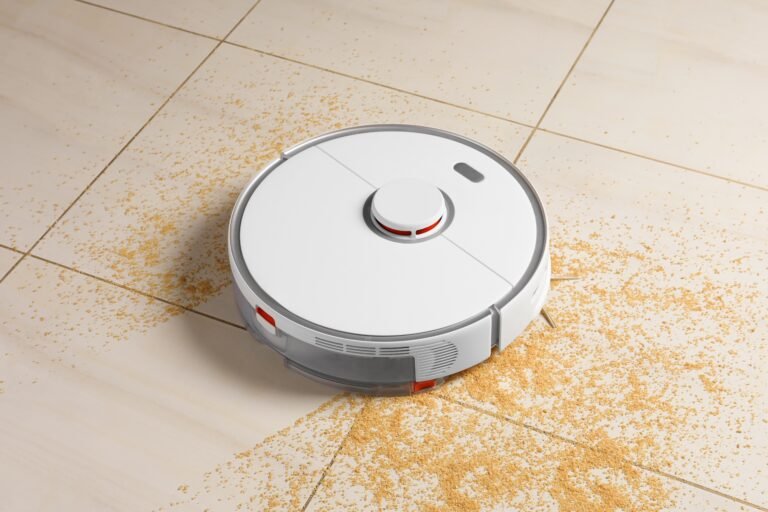Ultimate Guide to Wood Floor Maintenance: 8 Tips for Perfect Floors
Maintaining wood floors is crucial for preserving their beauty, durability, and overall value in your home. Wood flooring can add warmth and character to any space but requires proper care to remain pristine. This comprehensive guide will explore the eight essential tips for wood floor maintenance, offering practical advice and techniques that every homeowner should implement. By following these tips, you can keep your wood floors looking their best and prolong their lifespan.
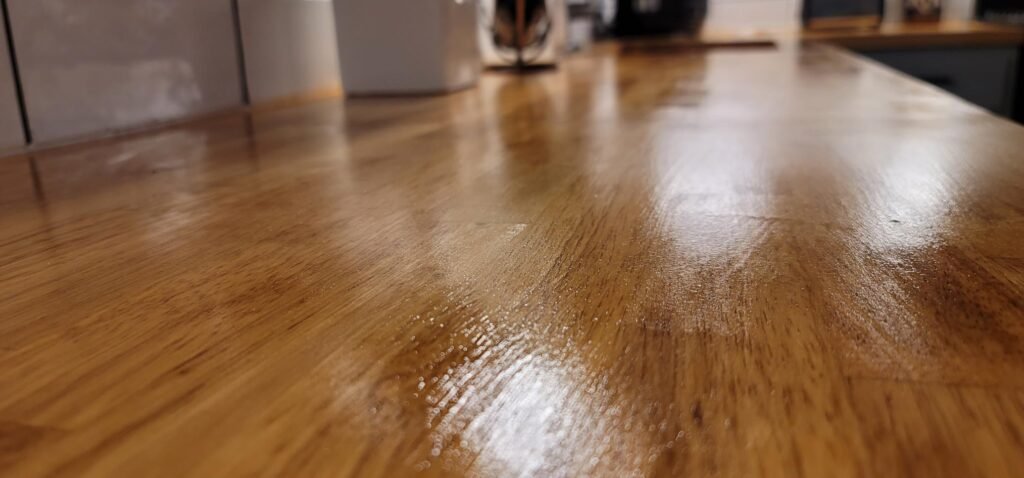
1. Regular Cleaning: The Foundation of Wood Floor Maintenance
Dust and Dirt Removal
One of the most fundamental aspects of wood floor maintenance is regular cleaning. Dust and dirt can accumulate quickly, and when walked on, they can scratch the surface of your wood floors. To effectively remove dirt, use a microfiber mop or a soft-bristle broom. These tools are designed to trap dust and debris without scratching the finish. Aim to sweep or dust mop your wood floors at least once a week or more frequently in high-traffic areas.
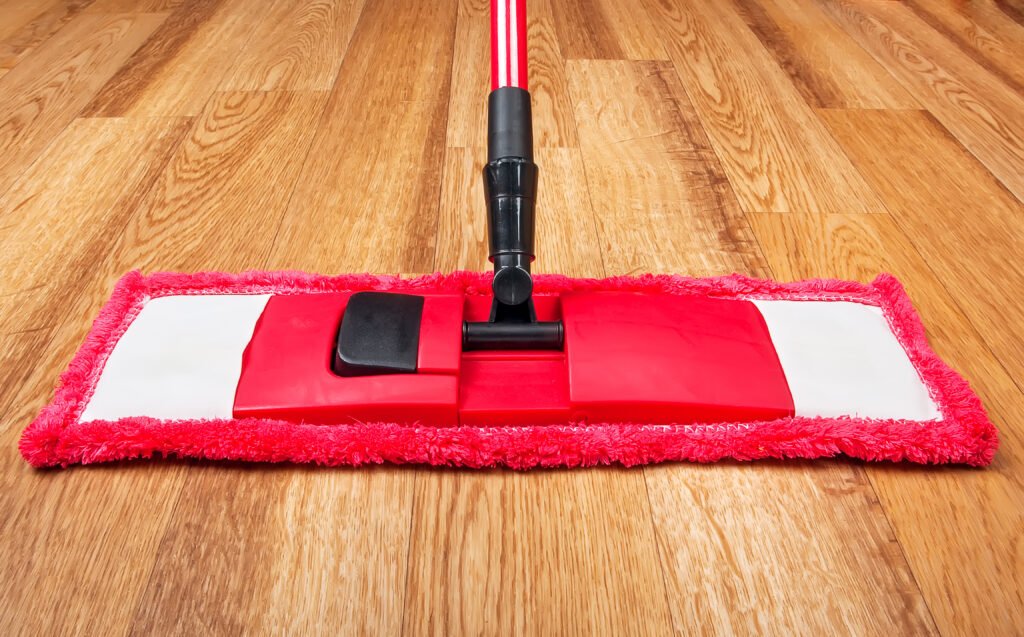
Deep Cleaning Techniques
In addition to regular dusting, deep cleaning is vital for maintaining your wood floors. Every month or so, clean your wood floors using a wood floor cleaner specifically formulated for your type of finish. Avoid harsh chemicals or water, as excess moisture can damage the wood. Instead, lightly mist the cleaner onto a soft cloth or mop and work in small sections. This method helps to lift stubborn dirt and grime without soaking the wood. Always follow the manufacturer’s recommendations for cleaning products and techniques to avoid damaging your floors.
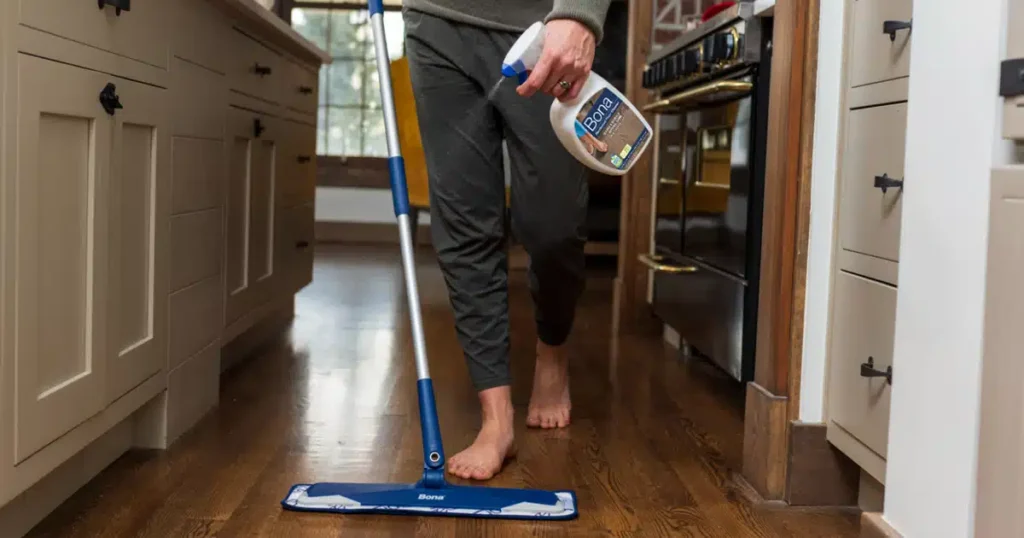
2. Implement Protective Measures
Area Rugs and Mats
To protect your wood floors from scratches and dents, consider placing area rugs and mats in high-traffic areas, such as entryways, living rooms, and hallways. These rugs act as a barrier, preventing dirt and debris from being tracked onto your floors. Additionally, ensure that any rugs you use have a non-slip backing to prevent slipping and sliding.

Furniture Pads
Another effective way to protect your wood floors is by using furniture pads under the legs of your furniture. These pads reduce the risk of scratches and dents caused by moving or shifting furniture. Be sure to periodically check and replace worn-out pads to ensure they remain effective. If you need to move furniture, lift it rather than drag it to avoid causing damage to your wood floors.
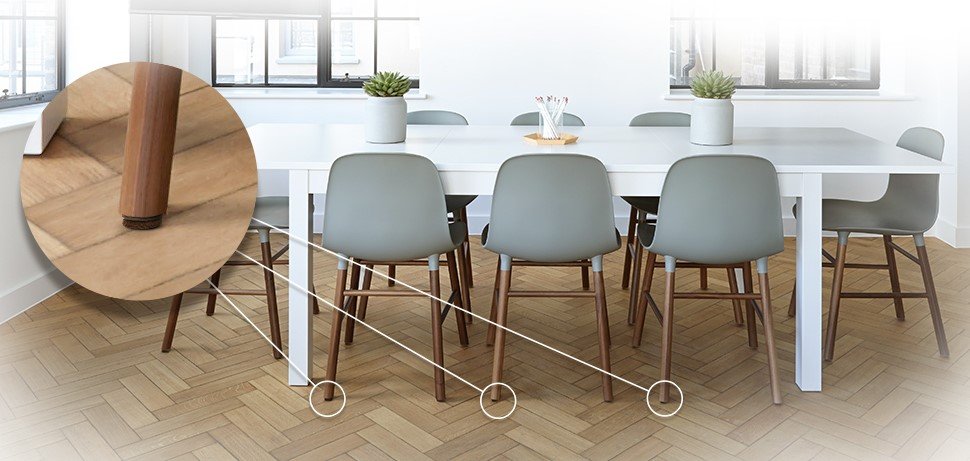
3. Control Humidity and Temperature
Ideal Humidity Levels
Wood is a natural material sensitive to humidity and temperature changes. Controlling the indoor environment is essential to maintaining your wood floors. Ideally, your home’s humidity should be between 30% and 50%. Wood can shrink when the air is too dry, leading to gaps between planks, while excessive humidity can cause the wood to swell and warp.

Use a Humidifier or Dehumidifier
Depending on your climate, you may need to invest in a humidifier or dehumidifier to help maintain optimal humidity levels. In winter, when the air tends to be drier, using a humidifier can add moisture back into the air and prevent the wood from drying out. Conversely, in the summer months, a dehumidifier can help reduce excess moisture and prevent warping or mould growth on your wood floors.
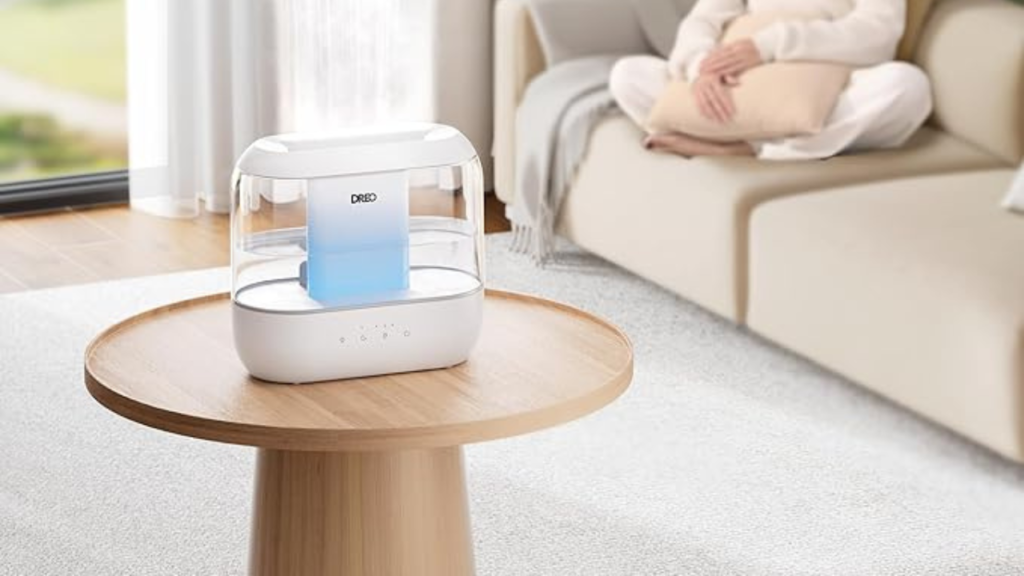
4. Address Scratches and Dents Promptly
Minor Scratches and Scuffs
Over time, minor scratches and scuffs are inevitable on wood floors. The key to maintaining their appearance is to address these imperfections promptly. You can often use a wood floor touch-up marker or crayon that matches your floor colour for surface scratches. Simply apply the product to the scratch and blend it with a soft cloth.
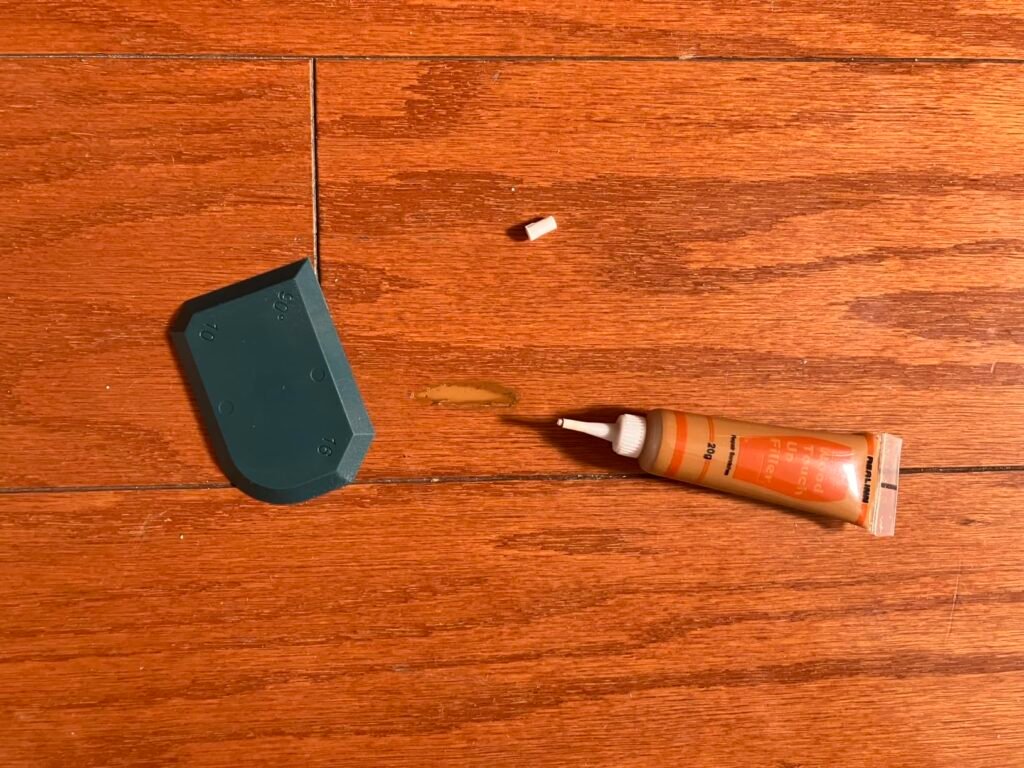
Deep Scratches and Dents
For deeper scratches and dents, you may need to consider a more intensive repair approach. Start by cleaning the affected area and ensuring it’s free of debris. Then, use a wood filler that matches your floor’s finish to fill in the scratch or dent. After the filler dries, sand it down to make it flush with the surrounding wood and apply a finish that matches your floor. If you’re unsure or uncomfortable with the repair process, consider hiring a professional to restore your wood floors to their original condition.
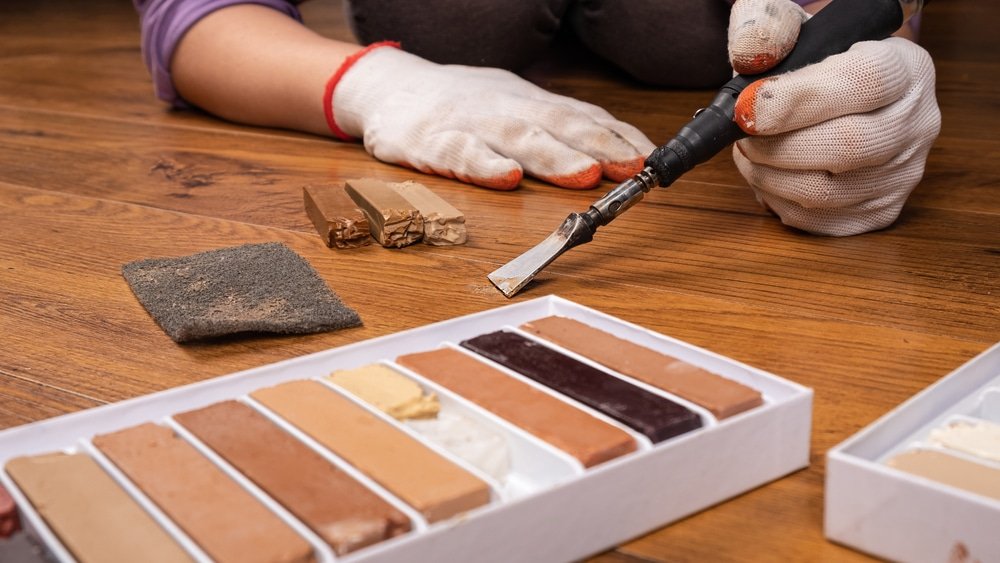
5. Schedule Professional Maintenance
Importance of Professional Help
While regular maintenance is essential for keeping your wood floors in good condition, scheduling professional maintenance can provide additional benefits. Professional cleaners have specialized equipment and products to thoroughly clean and restore your wood floors, removing deep-set dirt and grime that regular cleaning might miss.
Refinishing Wood Floors
In addition to cleaning, professionals can also help refinish your wood floors when they look dull or scratched. This process involves sanding down the top layer of the wood and applying a fresh coat of finish. Depending on the wear and tear, refinishing should be done every 5 to 10 years to maintain the floor’s beauty and protect it from damage.
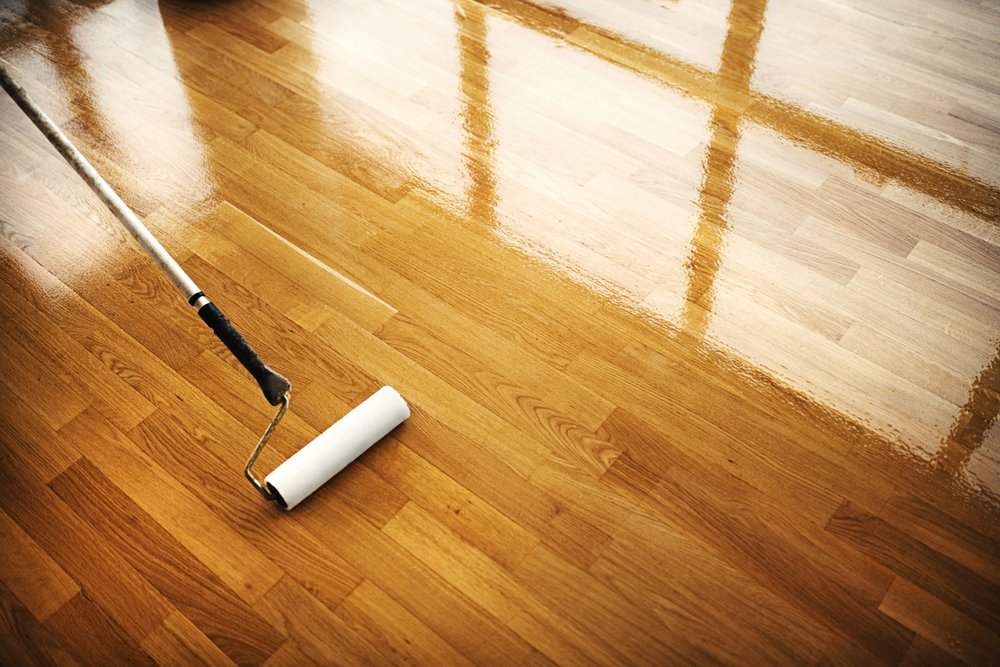
Annual Inspections
It’s also a good idea to schedule an annual inspection with a flooring expert. They can identify potential issues, such as signs of water damage or excessive wear before they become more significant problems. This proactive approach can save you time and money in the long run.
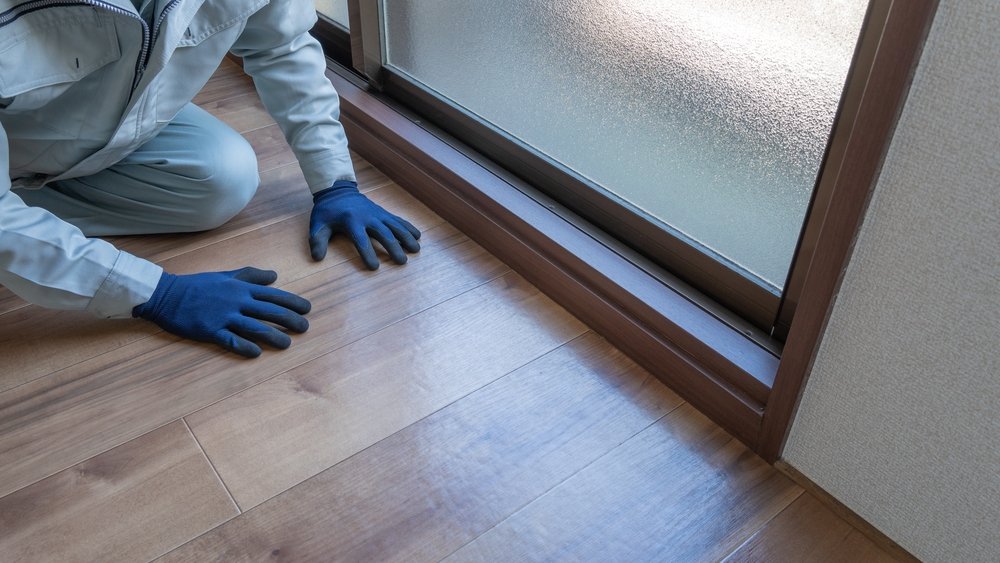
6. Choose the Right Cleaning Products
When it comes to maintaining your wood floors, selecting the appropriate cleaning products is crucial. Always opt for cleaners specifically formulated for wood surfaces, as these products are designed to clean without damaging the finish or the wood itself. Avoid using all-purpose cleaners, vinegar, or ammonia, as these can strip the protective layer and cause discolouration or damage over time. Additionally, consider using gentle pH-balanced cleaners on the finish while effectively removing dirt and grime. Regularly review your cleaning supplies and replace any that contain harsh chemicals or ingredients that could harm your floors.
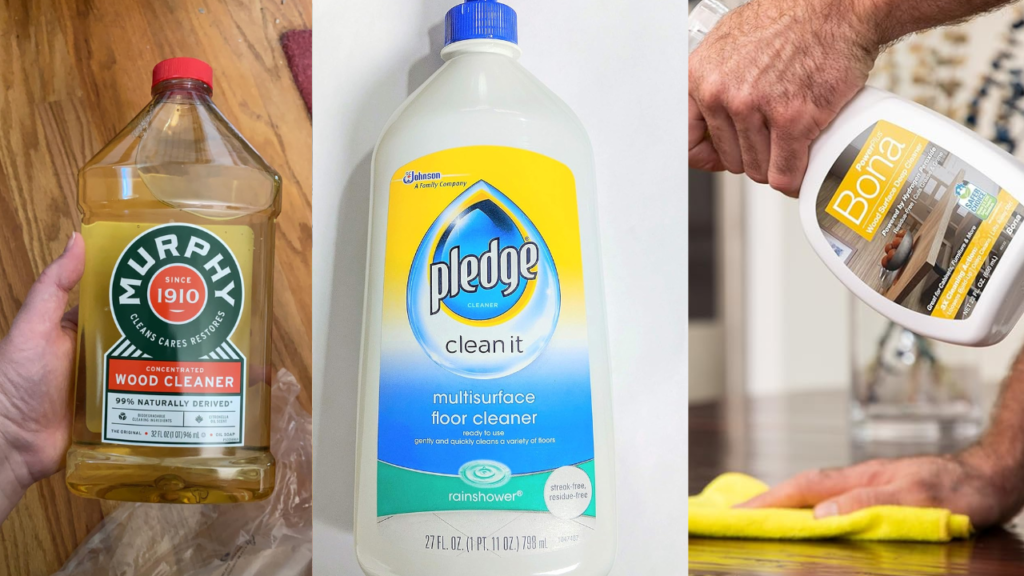
7. Avoid Excessive Water Exposure
Water can be one of the most damaging elements for wood floors, so preventing excessive moisture exposure is vital. Always use a damp mop rather than soaking wet, and never allow water to pool on the floor. In case of spills, wipe them up immediately with a soft, dry cloth to prevent moisture from seeping into the seams of the wood. Furthermore, be cautious when using steam mops, as the high heat and moisture can warp the wood and damage the finish. Keeping water exposure to a minimum can protect your wood floors from warping and other water-related issues.
8. Maintain Proper Footwear Etiquette
Encouraging proper footwear etiquette within your home can significantly contribute to the longevity of your wood floors. Request that family members and guests remove their shoes upon entering to prevent dirt, gravel, and debris from scratching the surface. Consider providing a designated area with shoe storage or cosy slippers to make it easier for everyone. If removing shoes isn’t practical, encourage using clean, soft-soled shoes that won’t scuff or scratch the floor. Promoting a culture of care for your wood floors can help maintain their beauty and integrity for years to come.

Conclusion: Elevate Your Wood Floor Care
Caring for your wood floors doesn’t have to be a daunting task. By implementing these five essential tips for wood floor maintenance, you can preserve the beauty and integrity of your flooring for years to come. Regular cleaning, protective measures, humidity control, prompt repairs, and professional maintenance are vital in keeping your wood floors looking their best.
By following this guide, you’ll enhance the appearance of your home and increase the longevity and value of your wood flooring investment. Remember, a little effort goes a long way, and your wood floors will reward you with warmth, elegance, and lasting beauty. Embrace these maintenance practices and enjoy the stunning aesthetic that only beautifully maintained wood floors can provide.
